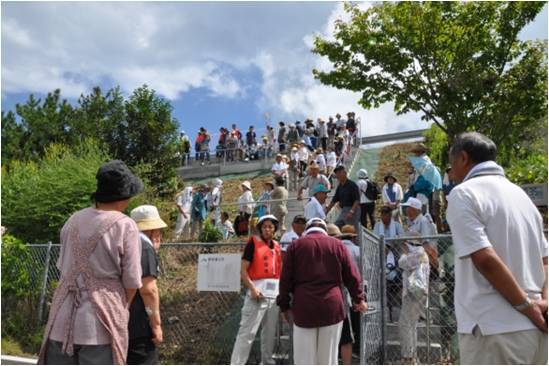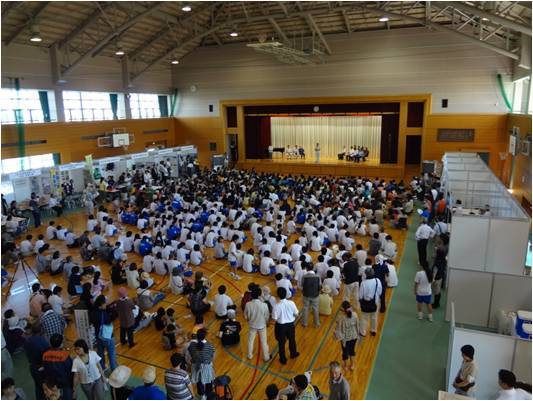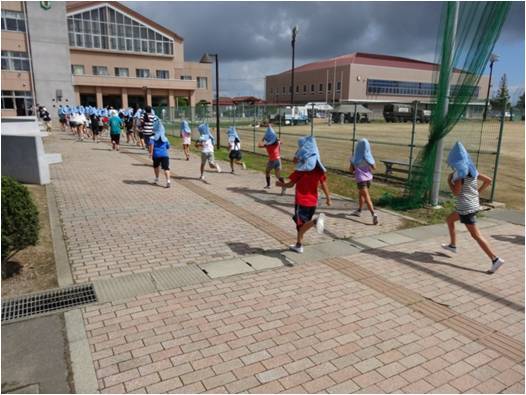Slowly Hurry
~Connecting, Communicating, and Continuing What Matters~
Activities of the Tohoku Recovery Support Network
The Orix Buffaloes' remarkable surge in the Pacific League just won't stop. After their game on July 21st, they became the first team in 19 years to reach 50 wins! As someone from Kansai, I couldn't be happier, but it might have brought back memories for some. Nineteen years ago was 1995. Yes. On January 17th of that year, the Great Hanshin-Awaji Earthquake struck. Back then, the team was the Orix BlueWave. Under the late manager Aoki, players like Ichiro and Taguchi, united as one with the local fans' loud cheers and the rallying cry "Ganbarou KOBE" (Let's do our best, Kobe!), achieved a truly moving league championship.
Nineteen years have passed since then, and next year will mark twenty. Speaking with acquaintances in Kobe City, I hear: "While the city as a whole has recovered, some areas suffered severe blows to their local shopping districts as companies from other prefectures moved in. Many residents living in leased reconstruction housing will see their leases expire next year, the 20-year term ending. What will happen to them? Some doctors say that people who have carried emotional burdens for years may start developing illnesses now. With about 40% of residents now having no direct experience of the disaster, there are still many challenges and concerns, such as how to pass on the experiences of the earthquake."
This is precisely the future shape of the Great East Japan Earthquake. I believe we must learn these lessons thoroughly and begin preparing our responses now.
After the Great East Japan Earthquake, people from Kobe—from government, universities, businesses, media, NPOs, and citizens—visited at various levels to offer support. Drawing on their own experiences of disaster recovery and reconstruction, they provided advice, shared opinions, and took the lead in action. The disaster victims in Tohoku found this support deeply reassuring. Witnessing this made me keenly aware of the ultimate importance of people passing on their experiences to other people. I believe it is essential to share and resonate with this sentiment – "to connect, to pass on, to continue" – with as many people as possible, across generations, and to continuously communicate it. While the organizations involved are diverse, they are all groups of people. Unless it reaches the heart of each individual, nothing will begin, and nothing will be born.
At Kahoku Shimpo, we have continuously run a workshop activity called "Musubi Juku" since the disaster. Survivors of the Great East Japan Earthquake serve as storytellers, traveling throughout Japan and even overseas to share their diverse disaster experiences. This provides listeners with an opportunity to consider how they will approach their own disaster preparedness moving forward.
Additionally, Kahoku Shimpo, the International Research Institute of Disaster Science at Tohoku University, and Dentsu Inc./Dentsu East Japan Inc. collaborate on the tsunami evacuation drill initiative "Kakeagare! Nippon."



On June 23rd of this year, with the tremendous cooperation of the Hokkaido Shimbun Kushiro Branch, we conducted a tsunami evacuation drill in Kushiro City's Otsurige district that integrated both the "Musubi Juku" and "Kakeagare! Nippon" initiatives.
We hope to continue creating such opportunities for connection in various settings going forward.
Related Article: Expectations Grow for Corporate Participation in "Kakeagare! Nippon"[2014.08.20]
 (MCP Bureau Area Solutions Department, Tohoku Recovery Support Network (*), Sendai Representative: Yasuhiro Kitade)
(MCP Bureau Area Solutions Department, Tohoku Recovery Support Network (*), Sendai Representative: Yasuhiro Kitade)
※Tohoku Recovery Support Network: A cross-functional virtual project team launched in August 2011 following the March 11, 2011 Great East Japan Earthquake. It was formed to explore how Dentsu Inc. could support recovery efforts locally through its core business. Currently, with the MC Planning Bureau Area Solutions Department as the core unit, the team consists of six members including staff from the Radio, TV & Entertainment Bureau and the 15th Sales Bureau. Collaborating with other internal departments and Dentsu East Japan Inc. offices, it primarily operates in the three prefectures of Iwate, Miyagi, and Fukushima. Over the two and a half years since its launch, the team's activities have been diverse, including reconstruction-related projects with local governments and central ministries, reconstruction events in collaboration with local media, and reconstruction support for local private companies.





 (MCP Bureau Area Solutions Department, Tohoku Recovery Support Network (*), Sendai Representative: Yasuhiro Kitade)
(MCP Bureau Area Solutions Department, Tohoku Recovery Support Network (*), Sendai Representative: Yasuhiro Kitade)